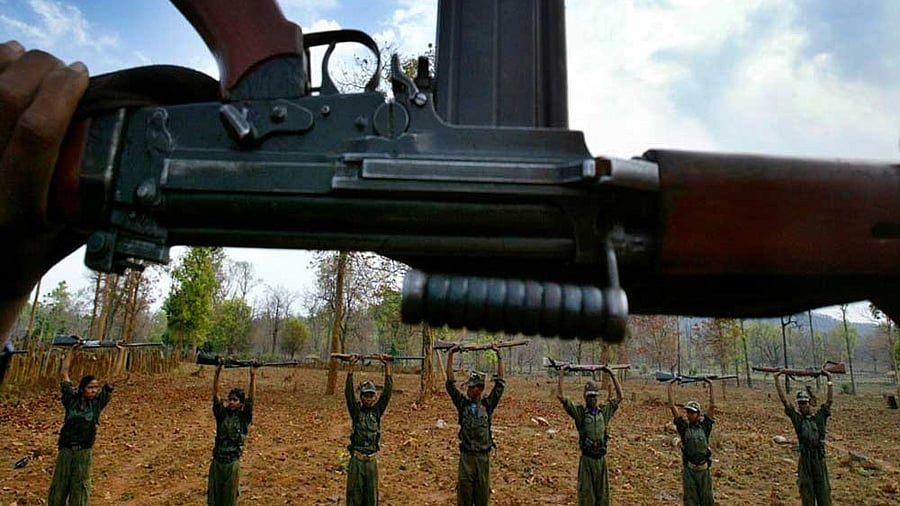
Representative image of Maoists.
Credits: PTI Photo
The killing of 31 Maoist cadres by the security forces in an encounter in Chhattisgarh’s Bijapur on Sunday was the latest in a series of anti-insurgency actions. The encounter came a week after 11 Maoists were killed in the same district. These actions may have dealt a serious blow to Maoists who once controlled large areas in central and eastern India including parts of Telangana, Chhattisgarh, Maharashtra, Jharkhand and Bihar. Many Maoists have been arrested while many have surrendered in states including Karnataka, either because of pressure from the security forces or disillusionment with the movement. This year, 62 Maoists have already been killed in security operations. At least 11 security personnel and nine civilians have lost their lives. The last few years have seen a decline in Maoist violence. The number of Maoist-affected districts has also come down from about 220 in the early 2000s to about 40.
Former Prime Minister Manmohan Singh, in 2009, described left-wing extremism as the “greatest internal security threat to the nation”. Home Minister Amit Shah has described Maoism as the “cancer” of the country and said it would be eradicated by March 31, 2026. There seems to be a better sense of purpose and co-ordination between the various agencies and forces engaged in the fight against Maoists. Better strategies are being employed in the operations. Many base camps have been set up near forests with Maoist presence and mobile networks have been installed.
Most of the areas considered Maoist strongholds are forests inhabited by tribal communities who were ignored by governments. Development has been elusive in these areas. It was the poverty, backwardness and the exploitation of the poor that made these locations fertile ground for the Maoist ideology. The administration has often been oppressive. The situation may have changed in the last two decades with governments adopting targeted development and welfare policies designed for the tribal communities. These interventions may have diminished the appeal of the Maoist ideology. Some Maoist groups have become part of the democratic process and contested elections. Despite recurring setbacks for the Maoists, it will be premature to consider their threat as over. A few weeks ago, eight security personnel were killed in a Maoist attack in Bijapur. The insurgents have come back from adversities in the past by adopting new strategies. It will also be wrong to rely excessively on force to counter the threat. Maoism, as an idea, can be eliminated only when the conditions that give rise to it disappear.
